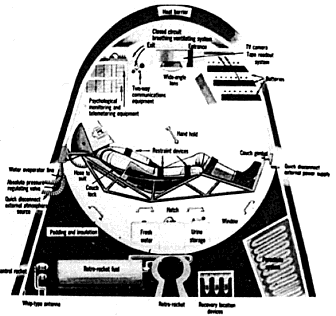 | ||
Man In Space Soonest (MISS) was a United States Air Force (USAF) program to put a man into outer space before the Soviet Union. The program was cancelled on August 1, 1958, and was replaced by NASA's Project Mercury. Only two men from the program would actually reach outer space. The first, Joseph A. Walker, did so twice in two X-15 rocket plane tests in 1963. Another, Neil Armstrong, became a NASA astronaut in 1962 and became the first person to walk on the Moon in 1969.
Astronaut candidates
MISS would have used a Thor booster, then later an Atlas, to launch a single-man spacecraft into orbit. The Air Force selected on June 25, 1958 the following nine men to be astronauts for the program:
References
Man in Space Soonest Wikipedia(Text) CC BY-SA
